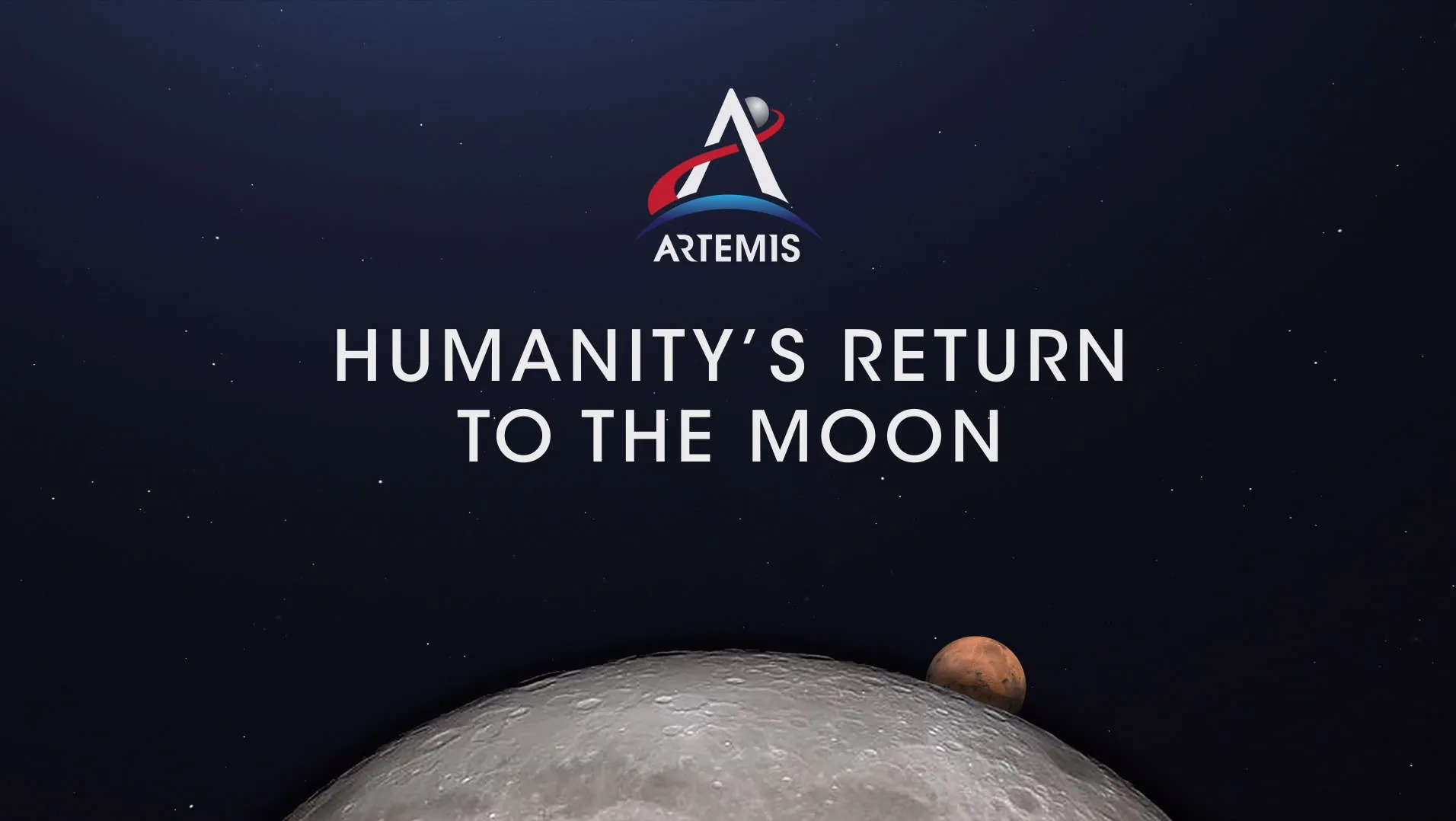The Acceleration, Reconnection, Turbulence, and Electrodynamics of the Moon’s Interaction with the Sun” (ARTEMIS) program is a NASA-led effort to return humans to the Moon and establish a sustainable human presence there. The program is named after Artemis, the Greek goddess of the Moon and twin sister of Apollo, whose namesake program first brought astronauts to the Moon in 1969.
Why is it important?
The Artemis programme is significant for a variety of reasons. For starters, it will assist us in learning more about the Moon and its resources. This knowledge could be applied to the development of new technologies and industries, as well as to the planning of future expeditions to Mars and other locations.
Second, the Artemis programme will serve as a source of inspiration for the future generation of scientists and engineers. Young people will be more likely to pursue jobs in STEM sectors if they witness people walking on the Moon again.
Finally, the Artemis programme is a global initiative that will bring countries from all around the world together to work towards a single goal. This collaboration may assist to increase trust and understanding across nations, as well as lead to new discoveries and technologies.
Goals and Objectives
What are the goals of the program
Moon missions and lunar exploration
The Artemis program has a number of goals and objectives related to Moon missions and lunar exploration. These goals include:
- Landing the first woman and first person of color on the Moon
- Establishing a sustainable human presence on the Moon
- Developing new technologies and capabilities for future exploration of the Moon and Mars
- Conducting scientific research on the Moon
- Collaborating with international partners on lunar exploration
Long-term vision for Mars exploration
The Artemis program is also seen as a stepping stone to Mars exploration. The lessons learned from the Artemis program will be used to develop the technologies and capabilities needed to send humans to Mars.
The Artemis program will also help to build the international partnerships that will be needed for a successful Mars mission.
Scientific research and international collaboration
The Artemis programme will also fund a variety of scientific studies. Scientists are curious about the Moon’s geology, resources, and environment. They’re also curious about the repercussions of long-term human residence on the Moon.
The Artemis program is an international endeavor, and it will involve partners from all over the world. This collaboration will help to ensure that the benefits of lunar exploration are shared by all of humanity.
Historical Context
History of lunar exploration
The history of lunar exploration dates back to the early days of astronomy. In 1609, Galileo Galilei became the first person to use a telescope to observe the Moon. In the following centuries, astronomers made many more discoveries about the Moon, including its craters, mountains, and valleys.
In the 20th century, lunar exploration took a major leap forward with the development of rocket technology. In 1959, the Soviet Union launched the first spacecraft to reach the Moon. In 1966, the United States launched the first spacecraft to land on the Moon.
Apollo program and its legacy
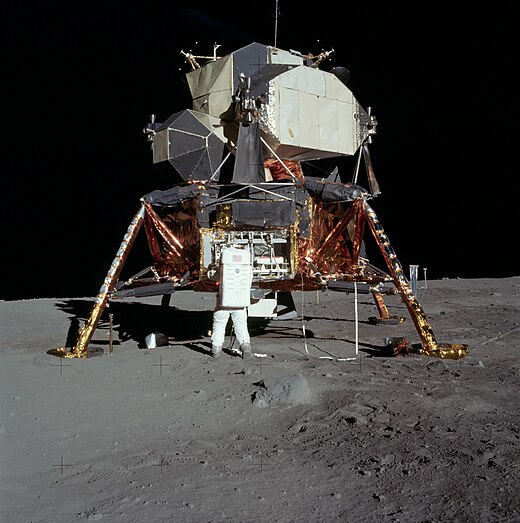
The Apollo program was a series of NASA missions that landed astronauts on the Moon between 1969 and 1972. The program was a major success, and it helped to cement the United States’ position as a leader in space exploration.
The Apollo programme left behind a number of significant legacies. First, it demonstrated that it was possible to travel to another world and safely return. Second, it contributed to our growing understanding of the Moon and its resources. Finally, it influenced a new generation of scientists and engineers.
Why the Artemis program was initiated
The Artemis programme was launched for a variety of reasons. It is, first and foremost, an extension of the Apollo program’s mission to study and develop the Moon. Second, unlike the Apollo programme, the Artemis programme aspires to create a long-term human presence on the Moon. Third, the Artemis programme is global in scope, with collaborators from all over the world.
The Artemis programme was also launched in reaction to other countries’ developing space capabilities, such as China. The Artemis programme is one means for the United States to maintain its position as a leader in space exploration.
The Artemis program is also important for economic reasons. The development of new technologies and industries for lunar exploration could create jobs and boost the economy.
Missions
Artemis 1
Artemis 1 was an uncrewed mission that tested the SLS rocket and the Orion spacecraft. The mission launched on November 16, 2022 and returned to Earth on December 11, 2022. Artemis 1 was a success, and it paved the way for future Artemis missions.
Artemis 2
Artemis 2 is scheduled to launch in 2024. It will be the first crewed Artemis mission, and it will carry astronauts around the Moon. Artemis 2 will test the capabilities of the Orion spacecraft and the crew life support systems.
Artemis 3
Artemis 3 is scheduled to launch in 2025. It will be the first Artemis mission to land astronauts on the Moon. Artemis 3 will test the capabilities of the HLS spacecraft and the lunar rovers and landers.
Artemis 4 and beyond
NASA plans to launch Artemis missions on a regular basis after Artemis 3. These missions will continue to explore the Moon and will eventually lead to the establishment of a sustainable human presence on the Moon.
Artemis Accords

The Artemis Accords are a set of principles that have been signed by NASA and its international partners. The accords outline the principles that will govern future exploration of the Moon and other destinations.
What are the Artemis Accords?
The Artemis Accords are a set of non-binding principles that lay out a common vision for peaceful, sustainable, and transparent cooperation in space exploration. The accords are based on the following principles:
- Peaceful exploration and use of space
- Transparency and information sharing
- Compatibility of operations
- Emergency assistance
- Registration of space objects
- Protection of space heritage
- Disposal of space debris
Why are they important?
The Artemis Accords are significant because they serve to assure that future Moon exploration will be peaceful and cooperative. The agreements also enhance transparency and responsibility among the member countries.
Spacecraft and Technology
The Space Launch System (SLS)
The Space Launch System (SLS) is a new rocket that is being developed by NASA. It will be the most powerful rocket ever built, and it will be used to launch the Orion spacecraft to the Moon.
The SLS will be capable of launching up to 27.6 metric tons of payload to the Moon. This will allow NASA to carry the Orion spacecraft, astronauts, and cargo to the Moon on a single mission.
Orion spacecraft
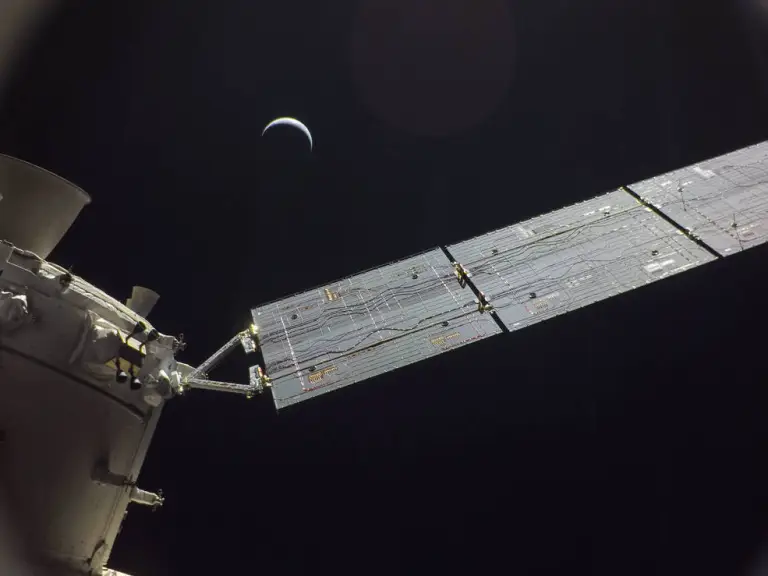
NASA
The Orion spacecraft is a new spacecraft that is being developed by NASA. It will be used to carry astronauts to and from the Moon.
The Orion spacecraft is designed to be reusable, and it will be able to carry up to four astronauts at a time. The spacecraft is also designed to be able to stay in space for up to six months, which will allow NASA to conduct long-duration missions to the Moon.
Lunar Gateway
The Lunar Gateway is a small space station that will be built in orbit around the Moon. It will serve as a staging and refueling point for missions to the Moon and beyond.
The Lunar Gateway will also be used to conduct scientific research and to test new technologies. The Gateway is expected to be operational by 2024.
Lunar rovers and landers
NASA is also developing new lunar rovers and landers for the Artemis program. These rovers and landers will be used to transport astronauts and cargo around the Moon.
The lunar rovers will be able to travel long distances across the lunar surface, and they will be equipped with a variety of scientific instruments. The lunar landers will be used to transport astronauts from the Orion spacecraft to the surface of the Moon.
The spacecraft and technology that are being developed for the Artemis program will enable NASA to achieve its ambitious goals of returning humans to the Moon and establishing a sustainable human presence there.
Astronauts and Crew
Selection and training process
The Artemis astronaut selection and training procedure is tough and demanding. A bachelor’s degree in a STEM field, three years or more of relevant work experience, and passing scores on a demanding physical and psychological exam are requirements for admission.
Selected candidates undergo a two-year training program that includes:
- Academic coursework in subjects such as engineering, mathematics, and space science
- Flight training in T-38 jets
- Underwater training to simulate the weightlessness of space
- Survival training
- Spacewalk training
Diversity and representation
NASA is committed to diversity and representation in the Artemis program. The agency is working to ensure that the Artemis astronaut corps is reflective of the American population.
NASA has already made significant progress in this area. The Artemis 2 crew, which is scheduled to launch in 2024, includes the first woman and the first person of color to travel to the Moon.
First woman and next man on the Moon
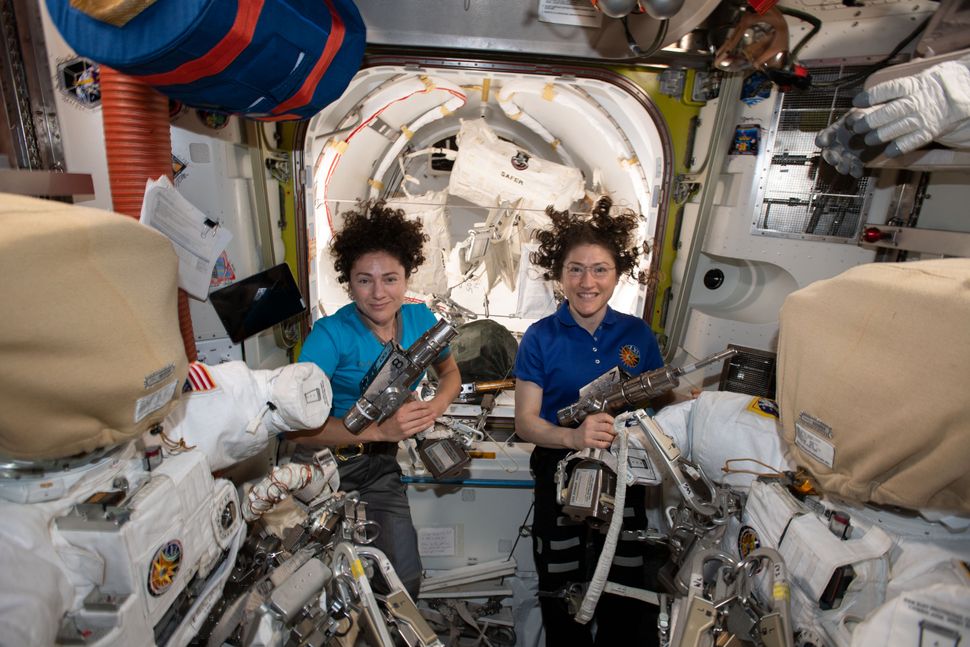
NASA has yet to reveal who will be the first woman and the next man to set foot on the Moon. However, the NASA has stated that the selection process will be merit-based, with all competent astronauts being considered.
NASA is also working to ensure that the Artemis program is a global endeavor. The agency is collaborating with international partners to develop new technologies and to train astronauts for missions to the Moon.
International Collaboration
Partnerships with other space agencies
NASA is working with a number of international partners on the Artemis program. These partners include:
- European Space Agency (ESA)
- Canadian Space Agency (CSA)
- Japan Aerospace Exploration Agency (JAXA)
- Australian Space Agency (ASA)
- Korea Aerospace Research Institute (KARI)
- Israel Space Agency (ISA)
- United Arab Emirates Space Agency (UAESA)
These partners are providing a variety of support for the Artemis program, including:
- Developing new technologies
- Providing training for astronauts
- Building infrastructure on the Moon
- Funding the program
Shared resources and expertise
International collaboration is essential for the success of the Artemis program. No single country has all of the resources and expertise needed to achieve the program’s goals.
NASA and its international partners can share resources and knowledge by working together. This will help to decrease the program’s costs and hasten its progress.
For example, ESA is providing the European Service Module for the Orion spacecraft. The European Service Module provides the spacecraft with power, propulsion, and life support systems.
CSA is developing the Canadarm3 robotic arm for the Space Station Gateway. The Canadarm3 will be used to assemble and maintain the Gateway.
JAXA is developing the lunar exploration vehicle (LEV) for the Artemis program. The LEV will be used to transport astronauts around the Moon.
These are just a few examples of how NASA is working with its international partners to share resources and expertise. This collaboration is essential for the success of the Artemis program.
Benefits of International Collaboration
International collaboration on the Artemis program has a number of benefits, including:
- Reduced costs: NASA and its international partners can lower the cost of the Artemis programme by sharing resources and knowledge.
- Accelerated progress: By collaborating, NASA and its international partners can speed the program’s progress.
- Increased innovation: International collaboration can result in fresh and inventive lunar exploration ideas.
- Enhanced partnerships: The Artemis program is helping to strengthen partnerships between NASA and its international partners.
- Insight for the future: The Artemis programme is motivating the next generation of scientists and engineers all throughout the world.
Timeline and Mission Phases
Overview of planned missions
The Artemis program is a long-term program with a number of planned missions. The following is an overview of the planned missions:
- Artemis 1: Uncrewed test flight of the Space Launch System (SLS) rocket and the Orion spacecraft (completed November 2022)
- Artemis 2: Crewed test flight of the SLS rocket and the Orion spacecraft (scheduled for 2024)
- Artemis 3: First crewed landing on the Moon since 1972 (scheduled for 2025)
- Artemis 4: Second crewed landing on the Moon, delivery of the first elements of the Lunar Gateway (scheduled for 2028)
- Artemis 5: Delivery of the first habitable module to the Lunar Gateway (scheduled for 2029)
- Artemis 6: Delivery of the first lunar rover to the Moon (scheduled for 2030)
- Artemis 7 and beyond: Regular crewed missions to the Moon, construction of a sustainable human presence on the Moon
Challenges and Risks
Technical challenges and solutions
The Artemis program faces a number of technical challenges, including:
- Developing new technologies to support long-term human habitation on the Moon
- Protecting astronauts from the harsh lunar environment
- Ensuring the safety and reliability of the SLS rocket and the Orion spacecraft
- Developing new methods for landing and transporting cargo and astronauts on the Moon
NASA is collaborating with its partners to address these technical obstacles. NASA, for example, is working on new life support, radiation shielding, and transportation technologies.
NASA is also conducting extensive testing of the SLS rocket and the Orion spacecraft to ensure their safety and reliability.
Environmental and health concerns
The Artemis program also faces a number of environmental and health concerns. These concerns include:
- The impact of space travel on human health
- The impact of lunar exploration on the lunar environment
- The potential for the spread of contamination between the Earth and the Moon
NASA is addressing these environmental and health concerns. NASA, for example, is creating new medical measures to safeguard astronauts against the impacts of space travel. NASA is also working to reduce the environmental impact of lunar exploration.
Budget and political challenges
The Artemis program is a long-term program with a significant cost. NASA will need to secure sustained funding from Congress to achieve the program’s goals.
Artemis confronts political hurdles as well. Some detractors believe that the programme is overly expensive and that the funds should be used for other purposes. Others contend that the programme is overly ambitious and that NASA should instead focus on more attainable aims.
NASA is striving to address these fiscal and political issues. For example, NASA is working on a long-term funding strategy for the Artemis programme. NASA is also attempting to increase public support for the programme.
Benefits and Discoveries
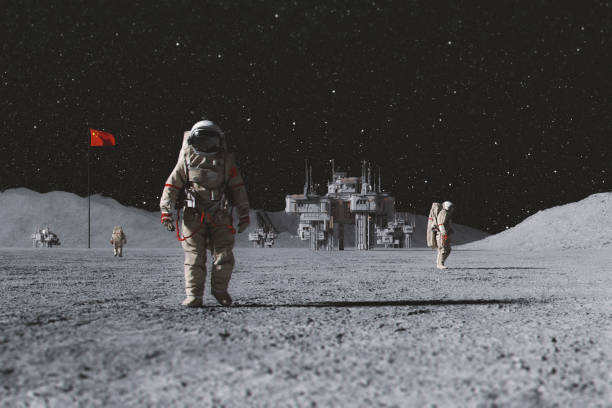
Scientific discoveries and lunar resources
The Artemis program is expected to lead to a number of scientific discoveries. For example, the program will allow scientists to:
- Study the Moon’s geology and history in more detail
- Search for water and other resources on the Moon
- Conduct experiments in the lunar environment
- Learn more about the effects of long-term human habitation on the Moon
Artemis could possibly lead to the finding of new lunar resources including water ice, Helium-3, and rare earth metals. These funds could be utilised to fund future lunar exploration and development.
Advancements in technology and innovation
The Artemis program is driving advancements in a number of technologies, including:
- Space launch and transportation systems
- Life support systems
- Radiation shielding
- Lunar rovers and landers
- Robotics and automation
- Artificial intelligence
These technological advancements will benefit not only the Artemis program, but also other space exploration programs and commercial space activities.
Inspiration and education
The Artemis program is inspiring a new generation of scientists and engineers to pursue careers in STEM fields. The program is also helping to educate the public about the importance of space exploration.
The Artemis program is a symbol of international cooperation and collaboration. It is also a symbol of human ingenuity and our desire to explore the universe.
Public Engagement
Outreach and educational programs
NASA is committed to including the public in the Artemis programme. The agency is working on a variety of outreach and educational programmes to share the enthusiasm of space exploration with the general people and to inspire the next generation of scientists and engineers.
Some of NASA’s public engagement programs for the Artemis program include:
- Artemis Student Challenges: Students are invited to design, build, and test lunar robots and other technologies that may be employed in future Artemis missions.
- Artemis Mooncast: This monthly livestream features experts from NASA and other organizations discussing the Artemis program and answering questions from the public.
- Artemis Educator Guide: This guide provides educators with resources and activities to teach students about the Artemis program.
- Artemis Social Media: NASA uses social media to share news and updates about the Artemis program, as well as photos and videos from missions.
Impact on the next generation of scientists and engineers
The Artemis program is inspiring a new generation of scientists and engineers to pursue careers in STEM fields.
A recent survey found that 85% of American students aged 13-17 are interested in learning more about the Artemis program. And 60% of those students said that the Artemis program had made them more interested in pursuing a career in STEM.
The Artemis program is also helping to increase the diversity of the STEM workforce. For example, NASA’s Artemis Student Challenges have been won by teams from a variety of universities, including Historically Black Colleges and Universities (HBCUs).
Conclusion
Recap of the Artemis program’s importance
The Artemis program is NASA’s ambitious plan to return humans to the Moon and establish a sustainable human presence there. The program is important for a number of reasons, including:
- To advance our scientific understanding of the Moon and its resources.
- To develop new technologies and capabilities for future exploration of the Moon and Mars.
- To inspire the next generation of scientists and engineers.
- To promote international cooperation and collaboration.
The Artemis program is a bold and ambitious initiative, but it has the potential to revolutionize our understanding of the Moon and our place in the universe. The program is also expected to lead to a number of scientific discoveries, technological advancements, and educational benefits.
Speculation on the future of space exploration beyond Artemis
The Artemis programme is a stepping stone to future exploration of Mars and other places beyond the Moon. The technologies and capabilities created for the Artemis programme will be utilised to enable future expeditions to Mars and other planets.
In addition to NASA, other space agencies and private companies are also developing new technologies and capabilities for space exploration. For example, SpaceX is developing the Starship rocket, which is designed to be capable of transporting humans and cargo to the Moon, Mars, and other destinations.
The future of space exploration is bright. The Artemis program and other initiatives are paving the way for a new era of human exploration and discovery.
References
Cite sources and resources for further reading
- NASA Artemis website: https://www.nasa.gov/humans-in-space/artemis/
- Artemis Accords: https://www.nasa.gov/artemis-accords/
- National Academies of Sciences, Engineering, and Medicine: A Sustainable Return to the Moon: Next Steps for Space Policy and Programs
- The Planetary Society: Artemis: The Moon to Mars
- SpacePolicyOnline.com: Artemis Program
